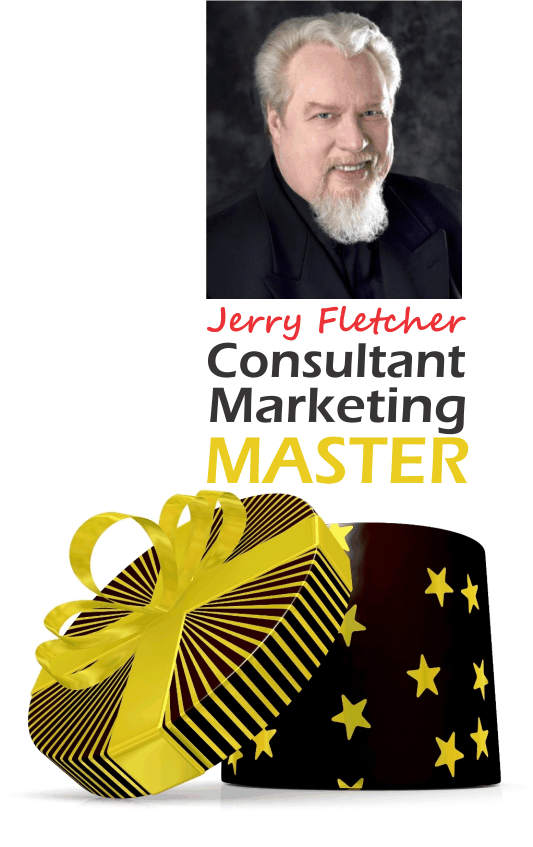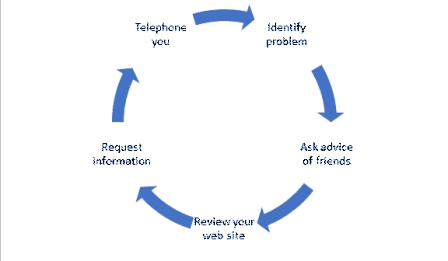
My daughter and I (she works for the Federal Government) were talking about why the best senior managers regardless of sector are extremely valuable. I was telling her about a 3-minute video I just completed that explains why successful elite consultants set the gold standard. See the video at: https://vimeo.com/356539908
Worth their weight in gold
Managers and consultants are all carefully taught to think, feel and believe that if we can define the problem we can find a solution. The rule of thumb is that solutions reduce costs and increase profits regardless of the kind of resources being considered.
That’s true as far as it goes. It’s a nice comfortable little box.
The best think outside the box
Manager or consultant they demand a sit down with the woman or man in charge, a discovery meeting. They start with an open mind, candidly discuss the visible problem identified by the CEO and ask questions to establish the value of the solution. Elite consultants take it one step further. They add recommendations above and beyond the requested solution to add value to their engagement.
The value-based proposal
Top notch consultants take their time in that discovery meeting. They have the CEO estimate the value of a solution to the visible problem and probe for additional concerns and valuations during the discussion. They get concise agreement on the objectives, how they will be measured as well as quantitative and qualitative impacts of the results. The elite consultant’s intent is to be able to base their fee on the outcome of the engagement in the CEO’s terms.
Their proposal will include three options:
- Option 1 must satisfy the objectives.
- Option 2 is more comprehensive (and includes option 1)
- Option 3 incorporates partnering with the firm to include hands on implementation or overseeing the implementation.
Perception, not a problem
A CEOs job is to keep the company ahead of the curve, see into the future and sense the possible disruptions out there. What if she or he just has a niggling feeling about a potential future problem, or better still an opportunity that is on the horizon? That represents a challenge for most managers not to mention consultants. The CEO wants to get a resolution on the uncertainty. She or he wants to quantify it and then look at the actions required to achieve it or defend from it.
The quantification proposal
Once again you must begin with a discovery meeting. Together, you and the CEO must assess the perceived discontinuity. Two concerns drive the selection of the consultant to handle this kind of engagement:
- A successful track record with this client (to include a couple flashes of brilliance and out of the box thinking).
- Experience in an industry or a credential in science or engineering that is perceived to have knowledge to bring to this research.
If you are in the room you need to verify which reason brought you there. More importantly, you need to let that reason drive how you build your proposal. Your proposal must identify the objectives, how they will be satisfied and a specific time frame to do so. If you believe that expertise you don’t have is required you must explain how you will find it and how you will engage it. To the degree possible, you must provide a statement of how the information obtained will be evaluated. You may also want to consider how to implement or oversee implementation.
A solution, no problem
Working with elite consultants can prove educational. Recently a client challenged my definition of a Prospect:
“A prospect is someone with a problem you can solve, who has the funds to pay you and is willing to talk to you.”
He said, Every CEO or President or business owner wants more profits, right?” I agreed. He went on, “I’ve stumbled onto something in my consulting over the last few years. It is a solution without a problem. I need a way to describe it and a way to convince CEOs to just have a conversation about it.”
Hidden in plain sight
Yes, for me this idea was outside my comfort zone. For starters the urgency of the problem is not inherent in this situation. You don’t even have a niggling possibility causing concern for the CEO. But, as we strove to build a product description more meaningful and to apply the techniques of 30-Second Marketing TM , I reflected on the testimonials I had videotaped from clients where this process was put in place and realized it was proven thinking outside the box that could only be developed by someone with business acumen and experience that had psychological training.
The Shared Passion Proposal
The key to greater profits, even in a down economy, is hidden in plain sight in every company that has employees. Employees, approached properly can in a relatively short time develop a passion for the business that builds profits long term. The essence of that proposal is, for the moment, a trade secret but I’ve interviewed the men and women that have applied the process in their organizations. Greater dollar profits are the tip of the iceberg in the world of the Millenials.
And so it goes.

Jerry Fletcher is a sought-after International Speaker, a beBee ambassador, founder and Grand Poobah of www.BrandBrainTrust.com
His consulting practice, founded in 1990, is known for on and off-line Trust-based Consultant Marketing and Brand development advice that builds businesses, careers and lives of joy.
Consulting: www.JerryFletcher.com
Speaking: www.NetworkingNinja.com
DIY Training: www.ingomu.com






